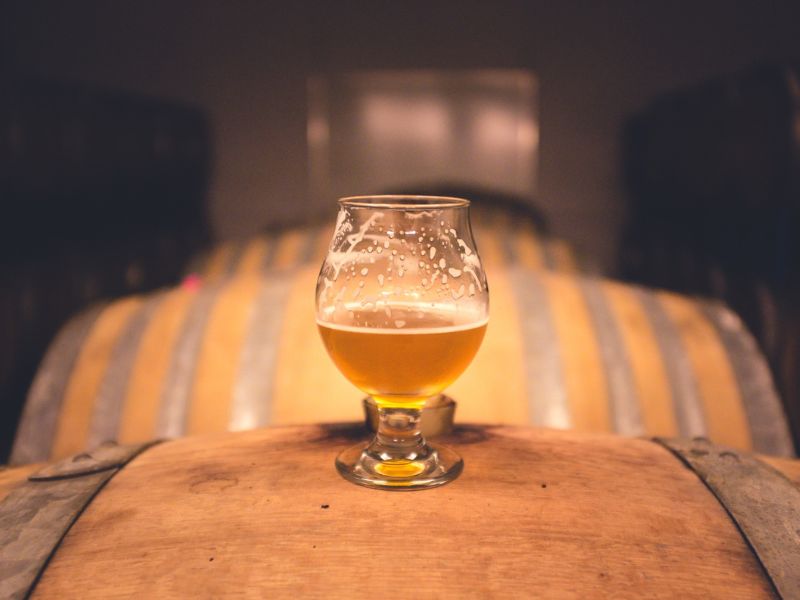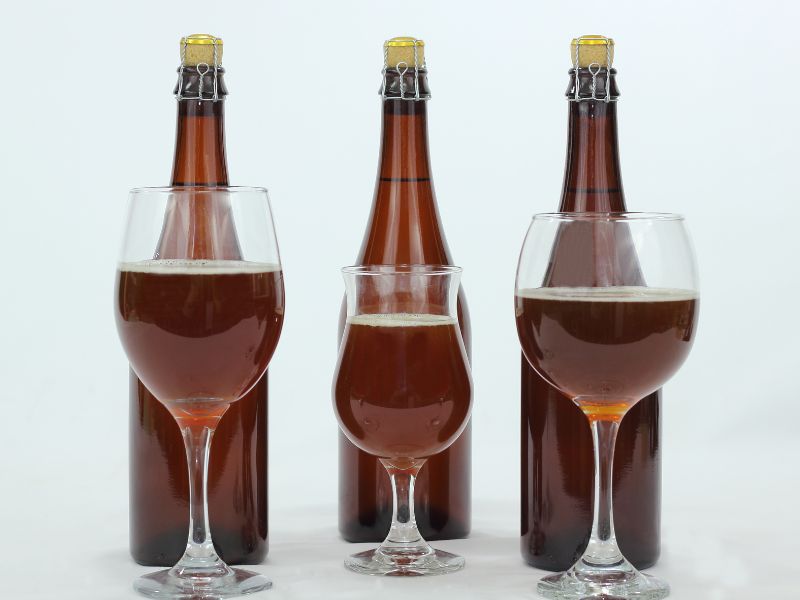There are numerous methods for adding sour flavor to beer, and there are a virtually limitless number of beers to which you may do it. To be clear, we don’t really like the word “sour beer” too much. For us, the term “sour” refers to a flavor, not a type of beer. Beers with sour flavors can be anything at all—dark, fruity, light, or heavy. However, it still leaves open the topic of how to sour beer.
The twangy flavor of this beer is due to the addition of wild bacteria and yeast. The dark and wild flavor and aroma of the beer are enhanced by aging the alcohol for several months, or even years.
We appreciate a bit of tartness in our beer, so we wrote this article to teach you how to make sour beer in your own home. We’ll also provide some advice on how to successfully complete your brewing project.
You can typically find lactobacillus, pediococcus, or both in sour beers. Both are souring microorganisms that give the beer a distinct level of sourness. One sour beer from another is distinguished by the manner in which those two microorganisms, or only one of them, enter the beer.
There are four basic approaches that brewers use to give its beer a sour flavor profile
- Include Pediococcus and Lactobacillus. For us, manually introducing these two microorganisms to our beer is the most straightforward method. Since yogurt’s tartness is caused by the same bacterium as lactobacillus, you’ll be familiar with it. Pediococcus adds a further layer of flavor and acidity. While lactobacillus and pediococcus generate acid, which results in tartness, yeast produces alcohol and carbonation. These two organisms can be added to your beer in a few different ways. You can give the beer a culture of lactobacillus and pediococcus by pitching a pack of Belgian Sour Mix 1 from White Labs:
“A unique blend of Brettanomyces and Saccharomyces yeasts as well as bacterial strains Lactobacillus and Pediococcus. Perfect for duplicating traditional spontaneous fermentations similar to those found in Belgian-style ales.”
We have also used a variety of microbe sources to sour beers, but I’ve found that pitching the bottle dregs from decent commercial sour beers produces the best results. The bacteria that turn the plain wort into a complex finished beer are found in the bottle dregs (yeast sediment) at the bottom of a sour brew. Compared to their “domesticated” brothers offered by White Labs and Omega Yeast, the bugs are frequently more aggressive, and robust, and create more complicated byproducts (and for about the same price the bottle dregs come with a beer to drink). - Fill a barrel with beer. Not just any barrel, though. You’ll need a barrel that was formerly filled with bitter beer. An empty oak barrel, a wine barrel, or a barrel that was originally used to store whiskey or rum won’t suddenly make the beer sour. In a barrel that once contained sour beer, the lactobacillus and pediococcus souring bacteria really establish a home in the barrel’s wooden staves. That sour bacteria continues to live deep in the wood even after a barrel has been empty (as we do for all the barrels we intend to reuse). As a result, the bacteria will eventually make contact with the subsequent beer that is placed in the barrel, turning it sour.
- Include some fresh fruit. Here, it’s important to remember to include actual fresh fruit. Fresh fruit naturally has sour bacteria like lactobacillus and pediococcus living on its skin. So we can take a non-tart beer and turn it into a tart beer by just adding something to it, like fresh cherries. The additional benefit of using this technique is that your beer will also taste like fresh fruit! In our beer, we include blueberries, peaches, lychee, cherries, raspberries, and other fruits.
- Natural fermentation can begin when you place unfermented beer, known as “wort,” out into an open container called a coolship (you can make a contraption of your own design) rather than directly adding yeast or bacteria. The wort is exposed to all the airborne bacteria in that container. The beer is placed into oak barrels after spending the night outside, when the assortment of microorganisms begins to work, fermenting the drink and giving it acidity. The finished beer gains a wide range of intriguing flavors thanks to this technique. The complex and nuanced flavors produced by spontaneous fermentation, which can last up to three years, cannot be duplicated by any other brewing techniques.
A famous sour using spontaneous fermentation (airborne bacteria and yeast) is the lambic beer of Belgian. It’s a type of Belgian ale where the brewer doesn’t add precisely chosen yeast. The wort is instead left in exposed containers to entice local bacteria to the sugary feast. As a result, the beer turns wild, nasty, and sour and drastically changes from batch to batch. Additionally, fruit lambics like kriek and framboise are made, and gueuze, a blended lambic, is frequently referred to as the “Champagne of Brussels.” A well-crafted lambic allows you to look back into the history of brewing in addition to enjoying a delicious beer.

You may be familiar with the phrase “kettle souring.” The brewer adds the lactobacillus before fermentation in a beer that has been kettle soured. More particular, they add it while the beer is still in the “kettle,” the brewing vessel. Thus, “Kettle Souring” was coined. The brewer can sour the beer in a matter of hours rather than months by adding the bacteria at that stage.
Kettle souring does not produce many of the rich and subtle flavors that go beyond acidity. An easier, single-note acidity can be found in a beer that has been kettle soured. Neither technique is “better” than the other, just like everything else in brewing. Simply put, it depends on what the brewer wants in their beer. They are welcome to indulge in that crisp kettle-sour acidity of a gose. They have barrels, fruit, spontaneous fermentation, and more at their disposal if they desire something more sophisticated.
There is one more thing to say about sourness, and it has to do with a technique that we consider to be a little too quick. You can simply add food-grade lactic acid to a non-sour beer. Although it happens with some homebrewers, we’d never do it and would never advise doing so. You do not get the complexity of a true sour made by nature.
Just remember to have a separate set of equipment for making sour beers. All of the cold side equipment should be dedicated to sours, especially any plastic items. You don’t want to infect your non-sour beer and create an unwanted sour beer.
We hope you enjoy your journey down the path of making delicious and complex sour beers.
youhadmeatbeer.com, 2022 (c) All rights reserved. Without previous written consent from youhadmeatbeer.com, no part of this publication may be duplicated or communicated in any way, whether it be electronically, mechanically, photocopying, recording, or otherwise.

